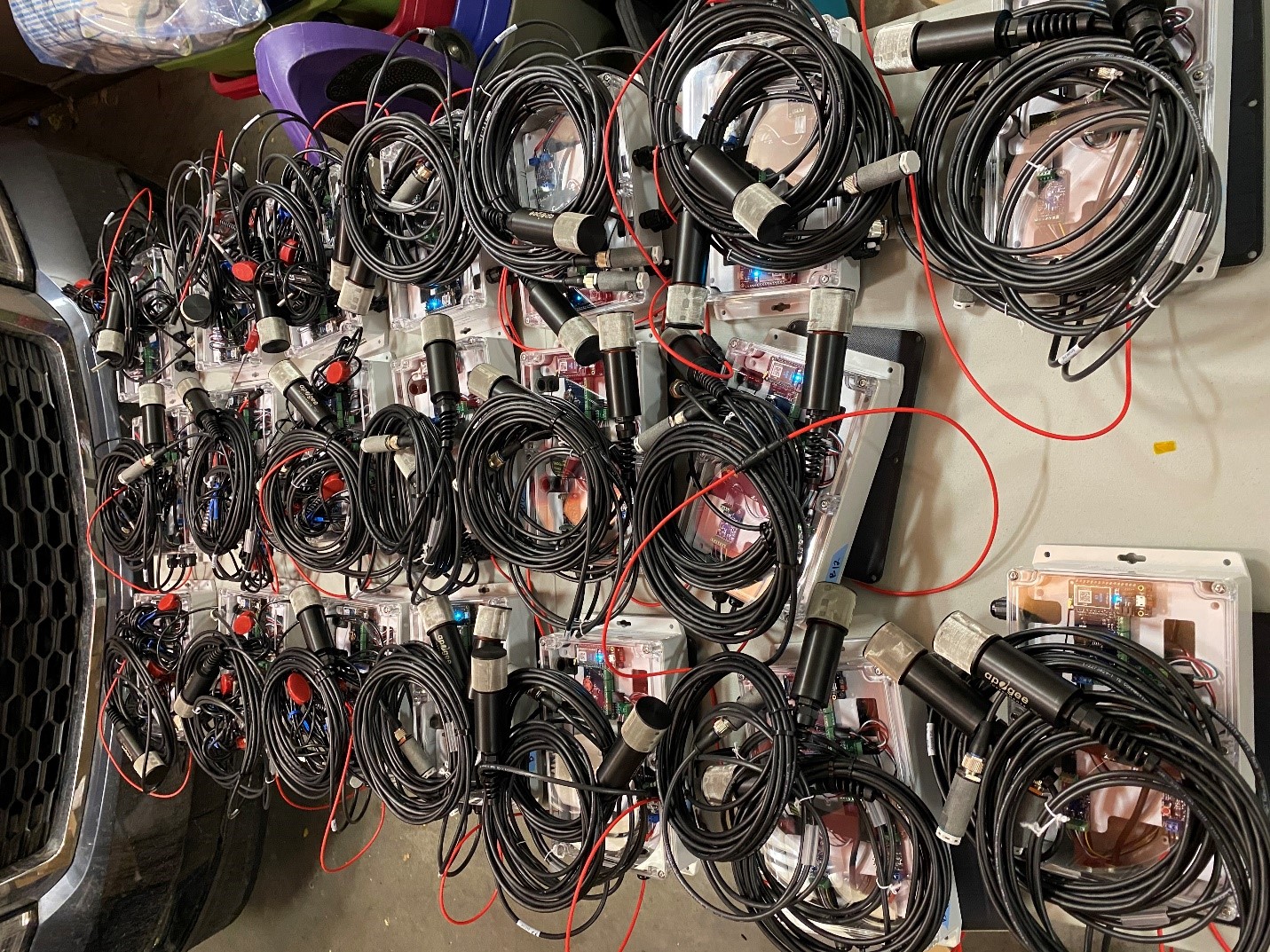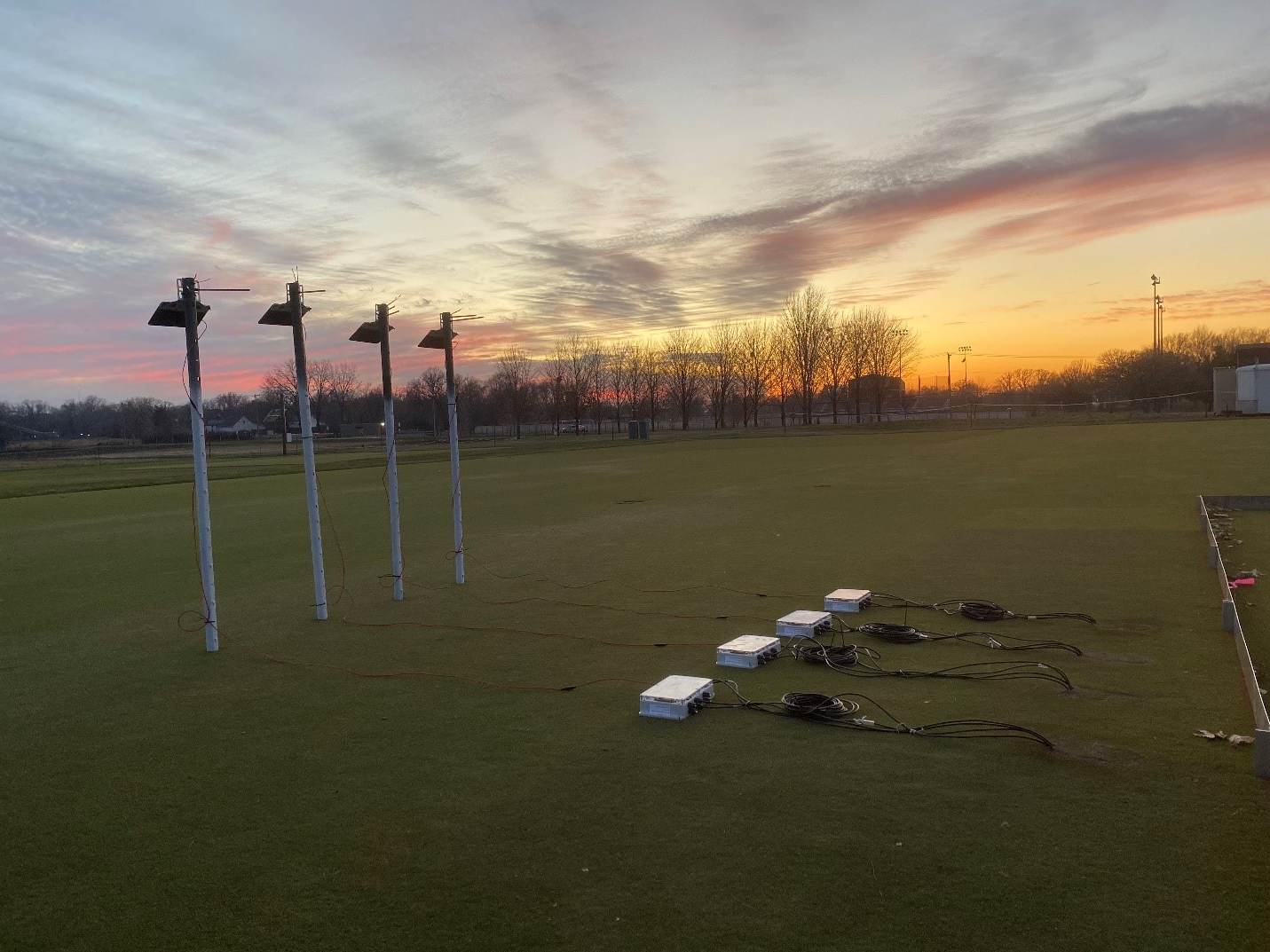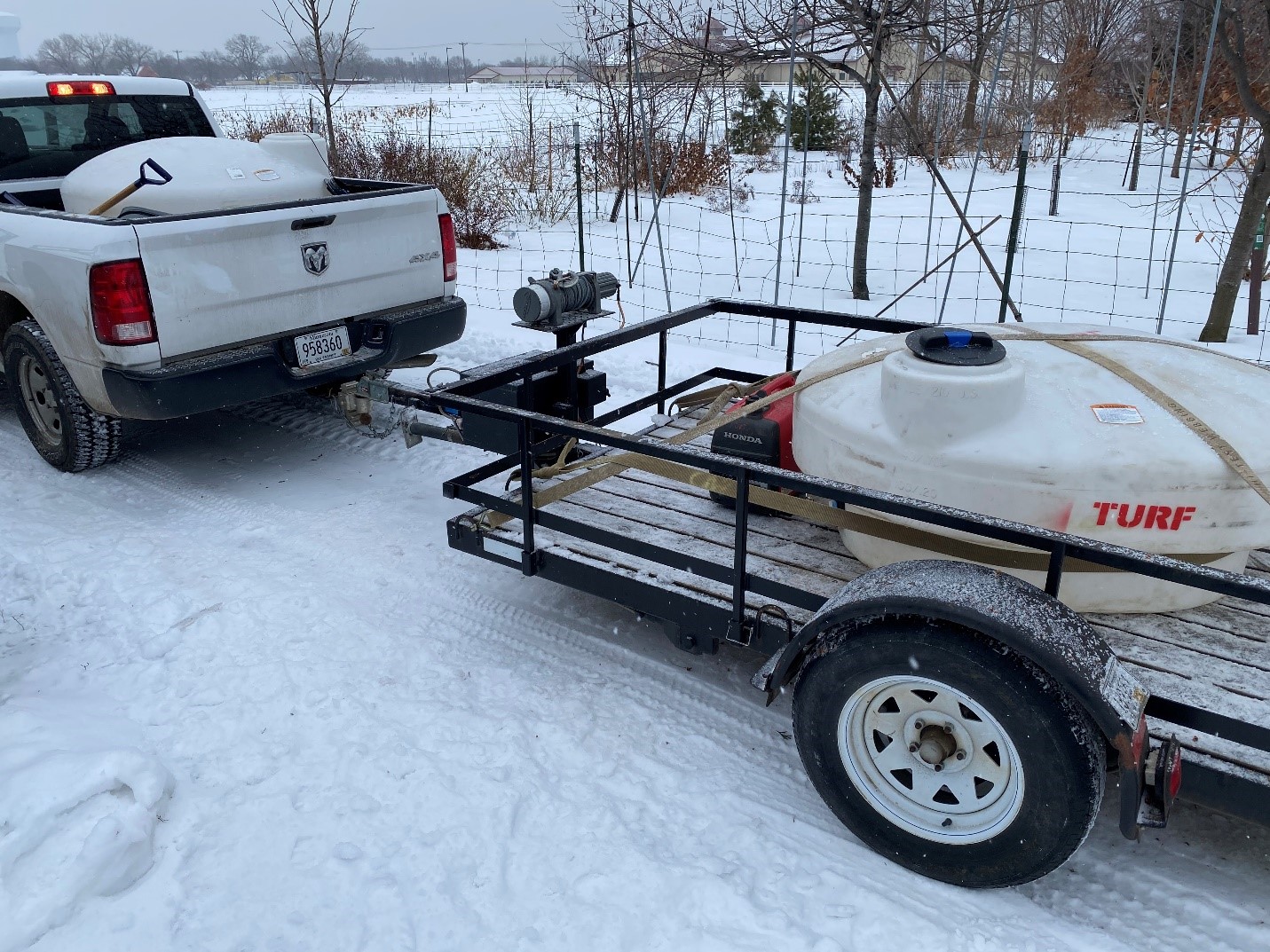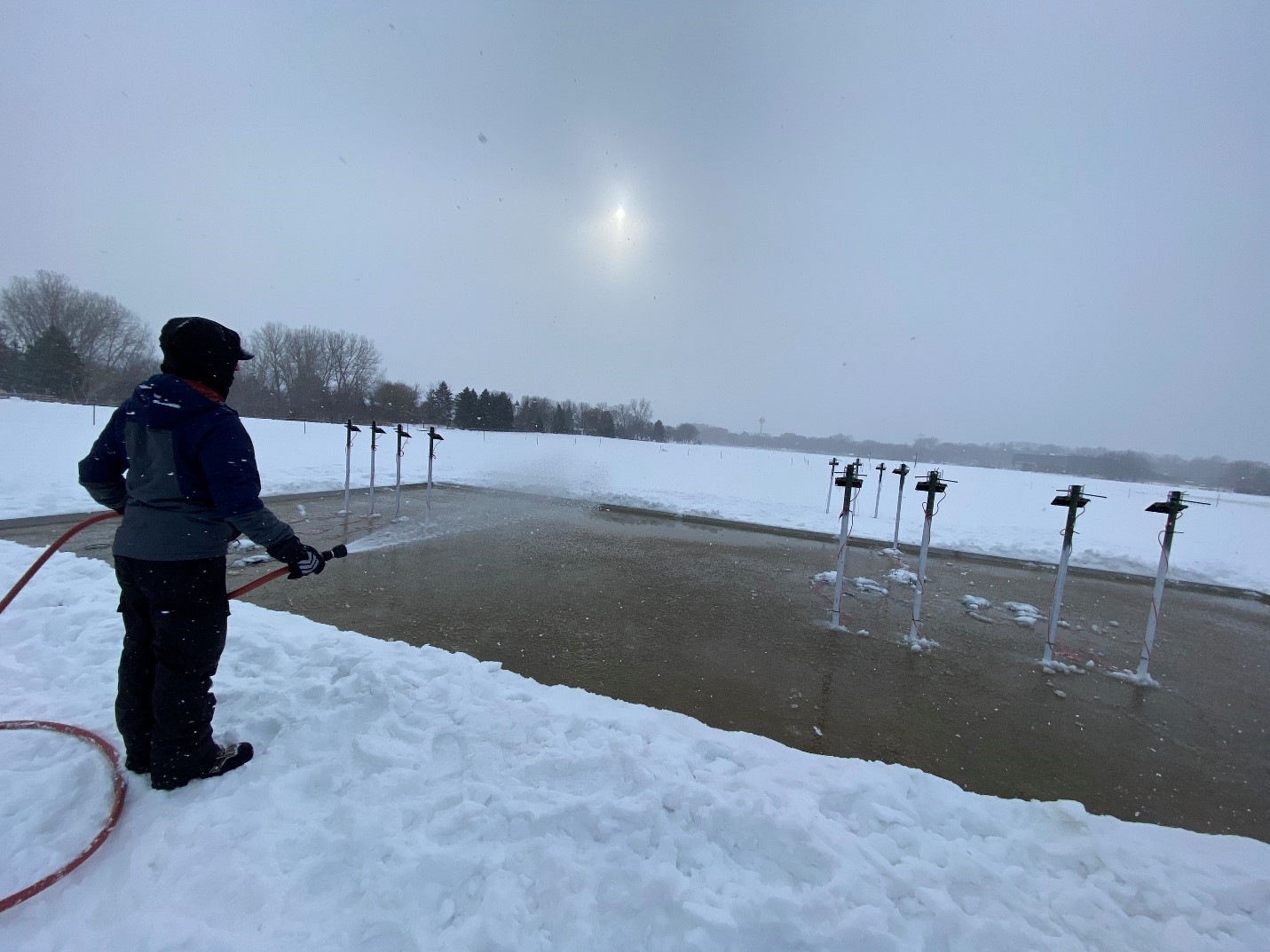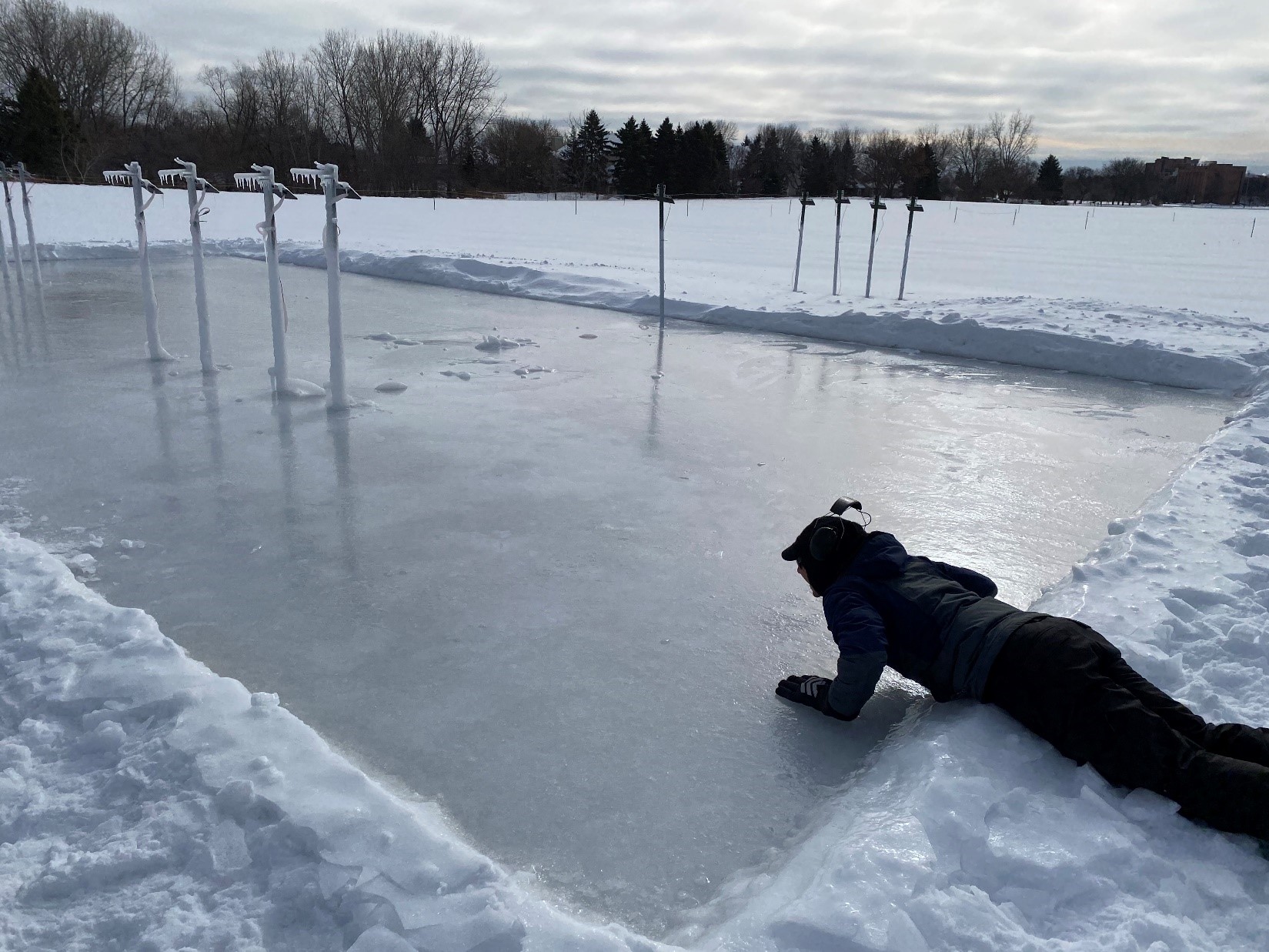By Andrew Hollman
When people hear that I work with turfgrass, inevitably the question comes up of “what do you do all winter?” The assumption from some people is that when the weather turns cold and you no longer need to mow your lawn, what else is there to be done? If you are involved with the turf industry, you likely know that there is a myriad of things that need to be done after mowing has stopped and before the ground freezes and the snow arrives. Irrigation needs to be blown out, snow mold fungicides sprayed, and covering greens are a few that come to mind for the golf courses.
Some of these tasks also are taken part of on the research side of things. This year we once again partnered with Dr. Paul Koch at the University of Wisconsin-Madison to assist with their regional snow mold trials. We had great support from superintendents at the courses where we put the trials, but not from the weather. At our most northern site in Biwabik, MN, an early heavy snowfall, and an extended forecast with highs well below freezing did not present a window when the ground would be clear for our trial application. Luckily, we had one day with a high of 34°F (so the sprayer wouldn’t freeze). The ground wasn’t frozen under the snow and we had a nice tracked snowblower with enough power to clear the 80 by 90 ft section of fairway (Figure 1). The variability in the winter weather patterns created a challenge but we were able to adapt to the situation.
This variability in winter weather has led to increasing challenges for superintendents. Early snow on unfrozen ground or winter rain can create ice over turfgrass. The type of ice, where it forms, and how long it is on or enveloping the turfgrass, all play a part in whether there will be damage or death. Unfortunately, there are no easy formulas to plug data into or a flowchart to determine when action needs to be taken, or how to go about mitigating the potential damage that ice could cause. Trials to examine variation of cultivar or species survival under controlled field ice are not readily available to guide selection of better materials for a site. With future research planned to create field ice on putting greens and a NTEP bentgrass putting green trial that ended, we decided to use the site to test our methodology for future research (Figure 2). We were looking to create a uniform 4-inch depth of ice, so we installed aluminum strips into the ground to act as a containment barrier and depth gauge (Figure 3)
Besides screening cultivars to see if there were differences between them for their survival under ice, we are interested in what is happening underneath. Last year we deployed several sensors using Wi-Fi technology to relay data in real time to monitor conditions in the soil. This year, in partnership with G.E.M.S., we created a few more sensors (Figure 4) that were deployed in a trial at TROE (Figure 5) in and around the iced area of the green, as well as at various participating golf courses around the state (Figure 6). We hope to gain more knowledge about conditions under ice that lead to putting green death.
Ice development on putting greens during winter can vary and is dependent on weather conditions lining up right. Since we wanted to ensure we could gather data under ice and test the success of new sensors, we created our own. We would have liked to have started the ice creation in December, but warm weather did not allow for ideal temperatures until well into January. Since the turfgrass research plots do not have access to water during the winter, water was hauled from the interior of the St. Paul campus (Figure 7) and a generator and pump was used to spray the green down with a fraction of an inch at a time (Figure 8). After a week of water application, four inches of ice covered 1250 ft2 of putting green (Figure 9). The sensors and equipment survived the ice encasement and successfully transmit data to the cloud. Once the ice melts we will see if it has killed the grass and hopefully add to the data about putting green survival under ice. While we wait for results from these outside trials, we are not idle, as a myriad of other projects in growth chambers, greenhouses and labs keep other team members busy over the winter.



